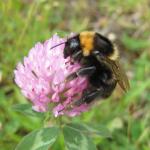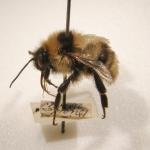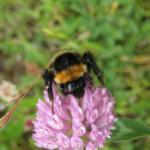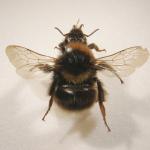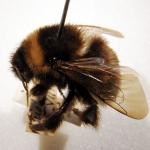Keys and general biology are found in Sladen (1912), Free & Butler (1959), Alford (1975) and Prŷs-Jones & Corbet (1991). This species is very closely related to the more northerly distributed B. distinguendus and males of the two species can be extremely hard to separate. In Scandinavia it is strongly associated with red clover (Løken 1973). Sladen (1912) also comments upon its close association with this plant.
Although formerly widespread and locally common in southern England, this species has experienced a catastrophic decline during the last fifty years and is now considered likely to have become extinct in Britain. The last confirmed specimens were found at Dungeness during 1988. The species ranges from western Europe eastwards to northern Mongolia. It is known to be declining throughout Europe. It has been introduced to New Zealand as a pollinator of red clover (Trifolium pratense).
Falk (1991) listed this species as Notable A [now known as Scarce (Na)]. Survey work conducted by the Bumblebee working group indicates that its status should be reviewed.
A species of herb-rich grassland, having a strong association with the pre-intensification farming systems of lowland Britain.
Queens search for nest sites during May. Nests mature during late August or early September (Sladen 1912; Løken 1973; von Hagens, 1994).
In spring, fertile queens seek out old mouse nests as the foundation for their nests. As this species is closely related to B. distinguendus, it is likely that nests situated a short distance underground are preferred. The population size of nests is unknown, but Sladen (1912) comments on the large number of first-brood workers produced by queens. Males and females are produced during August and September. Once the new sexual forms have emerged, the nest disintegrates, the mated queens go into hibernation whilst the workers and males can be found on flowers before eventually dying. Hibernation sites for queens are unknown.
Red clover (Trifolium pratense), honeysuckle (Lonicera periclymenum), white dead-nettle (Lamium album) and viper's-bugloss (Echium vulgare).
No cuckoo bumblebees are known to attack this species.
Profile written:
Proofed: April 2012


